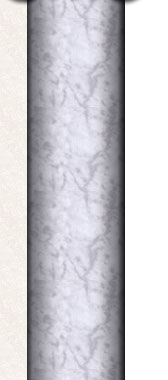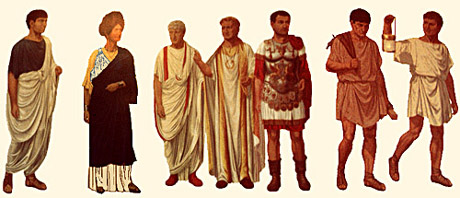





As it is so often said, "Clothes make the man," so it is in Il Senso de Acqua, for attire and accessories bespeak of a citizen's status within society. Men and Women tend to wear gender specific attire for the most part, but adventurers are begining to break most of the stereotypes. Some of the general populace appreciates this and some do not. Above, traditional attire for Il Senso can be seen. Il Senso is very much a "face-to-face" society, and public display and recognition of station were an essential part of having status. Much of the styles and types of clothing are designed to reveal the social status of its wearer, particularly for freeborn citizens. The more distinguished the wearer, the more his dress was distinctively marked, while the dress of the lowest classes was often not marked at all. A citizen can tell how important or wealthy a person was from their toga or lack of one. For example: Only free men are allowed to wear a toga, where slaves wear only tunics. In the above diagram, for example, we can deduce that the first man on the left is a citizen (because he wears a toga) but is not an equestrian or senator (because he has no stripes on his tunic). We know that the woman is married because she wears a stola. Colored shoes and the broad stripes on his tunic identify the next man as a senator, while the border on his toga indicates that he has held at least one curule office. The laurel wreath on the head of the next man and his special robes indicate that he is an emperor, while the uniform and cloak of the following man identify him as a general. It is more difficult to determine the exact social status of the two men on the right; their hitched-up tunics indicate that they are lower-class working men, but the two lowest social classes in Il Senso (freedpeople and slaves) did not have distinctive clothing that clearly indicated their status. These men could both be freedpeople (or citizens at work, for that matter); however, the man in the brown tunic is carrying tools and the other man is lighting his way, so we can deduce that the man in the white tunic may be a slave of the other man. The tunic that is worn by plebians (common people), herdsmen and slaves is made from a coarse and usually dark and plain material. Where the tunic worn by patricians is made from white wool or linen. Magistrates wear the tunic augusticlavia, and senators wear a tunic with broad strips, tunica laticlavia. Military tunics are typically shorter than those worn by civilians. A citizen of Il Senso is expected to adhere to these rules of ettiqutte when it comes to fashions: peasants wear poor, coarse and dirty cloathing, with little in the way of adornments, and the nobility wear refined, elegant clothing, bedecked with jewels and gold. The middle class wears clothing somewhere between. Still as all people know the rules of attire, it is fairly easy for a nobleman to disguise himself as a peasant to go about in the town to "slum" with his lessers, be they women or men of less than reputable persuasion, or to spy on those who work for him. Now that adventurers are finding treasure, it is easier for them to purchase noblity style and quality of clothing, for the merchants will sell to whomever has the coinage. This is frowned upon by the nobility as the lines between class distinction are slowly becoming blurred, much to the dismay of those interested maintaining the status quo. A demi-human, no matter the refinement or style of his or her attire still may find that there is still bias and prejudice againt him or her because of race, due to the nature of the human inhabitants of the city. To understand the different types of attire available to a citizen, we will discuss them in the following categories: |




